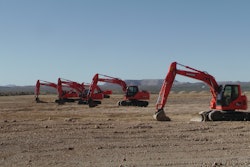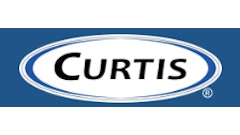During Bill Clinton's 1992 presidential election campaign, his strategists famously reminded the electorate that the "economy" was top priority for voters. Two administrations later, the construction industry again faces dire economic conditions impacting every business decision they make.
When it comes to the fleet management process - whether it's equipment selection and acquisition, application, maintenance, or capital equipment tax considerations - business owners are boring down into every aspect to make sure they are keeping their businesses safe and profitable during what is expected by all to be a very tough 2009.
For those with on- and off-road fleets, this is an opportune time to compare the cost of ownership including management time spent dealing with fleet maintenance, legalization, record keeping, etc. with alternative programs including full service leasing.
Financing Problems
The conundrum of whether to lease vs. own has been facing business owners for as long as the leasing concept has been around. Full service combines financing and services offering economies of scale with single vendor sourcing. The number one reason people are considering leasing today is that it's an alternative form of financing the equipment they need. With capital being a limited resource, the investment needed for new equipment is huge. In this tight credit market, prospective lessees can turn to full service companies as an alternative to traditional lending sources.
The leasing entity makes the investment for the equipment, leaving the lessee off the hook if there are market fluctuations affecting the residual value of the equipment as it ages and depreciates. For example, if a tractor costs $85,000 to purchase, and the equipment is set up on the tax books to depreciate over a period of seven years down to a value of $35,000, the owner of the equipment must be able to clear a value of $35,000 off of the tax books by year eight.
However, what is happening in today's market is that there is a surplus of equipment, including a high number of tractors and trailers hitting the market. The once anticipated higher values have now been negated and are much lower. In the case of a company with fleet ownership, what happens to the bottom line when they try to replace 20 tractors but can only get $20,000 per unit? The fact is the company owner will take a book loss when the equipment is sold. In the leasing arrangement, those worries are transferred to the lessor as the tax owner of the equipment.
In addition, when company owners approach their credit sources for equipment financing, there are still potential limitations; restricting covenants, limited lines of credit, or bumping up against established credit lines. In fact, the on-balance sheet tax treatment for assets purchased through credit may impact a company's key ratios resulting in higher rates for future borrowing.
More benefits to the bottom line
Rather than apply working capital to the purchase of vehicles, or tie it up in long-term loans that reduce borrowing reserves, a full service lease agreement enables customers to put their money to work in programs directly related to the growth and profitability of their core businesses. With a full service lease co-joined with programmed maintenance, the business owner knows exactly what his or her monthly transportation expenses will be, which is a considerable budgeting and bookkeeping advantage. In an unstable economy, full service leasing can deliver bottom-line stability.
Complex and constantly changing tax codes can further complicate fleet investment decisions. A truck leasing firm makes it their business to stay on top of tax changes and understand their impact on vehicle replacement and lease vs. buy decisions.
Full service leasing also protects the lessee from unforeseen equipment failure, breakdowns, and the resulting downtime associated with that. Most agreements include access to replacement vehicles when repairs are needed. And while a monthly payment of $4,000 for the lease of a tractor and trailer may seem high to some small-sized businesses, owners should keep in mind that one single repair bill could far exceed that cost, not including the impact caused by downtime.
It's important that business owners, who are considering the lease vs. own option, determine if the lease of the truck will generate enough revenue and cash to pay for itself.
2010 Changes Loom
As the year 2010 approaches, business owners are staring down the barrel of new truck emissions regulations that bring with them a host of new considerations for those business owners thinking about the lease vs. own situation. All new trucks put into service in 2010 will be required to meet U.S. EPA emissions standards. While the goal of the new standards is undeniably beneficial for the environment, it does raise questions and concerns for current fleet owners anticipating the needs for new vehicles which might lead them to consider a leasing arrangement.
Do I know if the technology is fully proven? Do I employ enough properly trained mechanics with the skills to repair the new vehicles with the new technology and keep them on the road? Do I have a network of service providers in case I have breakdowns to get my equipment up and running? Am I able to get substitute equipment if my equipment breaks down? Do I have someone to manage the whole process? When the lease option is chosen, all of those questions - and their answers - become the concern of the leasing entity.
Budgeting properly for a fleet can encompass any number of considerations that add up to the true cost of ownership. These considerations usually include:
- Fleet logistics
- Staff management
- Preventive maintenance
- Technician training
- Emergency road service
- Safety programs
- Permitting and licensing
- Vehicle washing
- Substitute vehicles
- Fuel tax issues
- Full administrative support
With a full service lease or contract maintenance - which covers everything in a full service lease except the financing and ownership of the equipment - these considerations are included in a turnkey operation. And both enable company owners or executives to focus management, staff and financial resources on the firm's core competency. The true bottom line of leasing is it frees up a company to do what it does best, leaving the transportation business to the professionals.
Lease vs. Buy Worksheet
By visiting http://www.nationalease.com/gui/worksheet.asp and using the calculator at that site, visitors can see how much they could save by choosing the leasing option. Before beginning, the following information should be on hand in order to determine the actual anticipated costs.
- Opportunity cost calculation: Net profit after taxes; Total assets; Cash in trucks
- Depreciation calculation: Purchase price; Down payment; Salvage value; Terms in years
- Interest cost
- Annual registration cost
- Property tax
- Sales tax calculation
- Federal excise tax rate
- Federal highway use tax
- Annual inspection
- Vehicle insurance
- Maintenance facility
- Facility supervision
- Facility utilities, WC, OSHA
- Depreciation
- Road service expense
- Environmental costs
- Lost time calculation: Average wages, Hours lost
- Maintenance calculation: Cost; Average annual miles
- Substitute vehicles
- Rental equipment calculation: Regular rental rate; Preferred customer rate; Number of weeks rented
- Identification Cost
- External cleaning: Number of washes; Average cost per wash
- Bulk fuel program
- Fuel tax
- Management cost calculation: Hourly rate; Hours per week
- Clerical cost calculation: Hourly rate; Hours per week
Gene Scoggins is president of NationaLease, the largest full service truck leasing organization in North America, with more than 600 service locations throughout the U.S. and Canada and a combined customer fleet of 125,000 trucks, tractors, and trailers. The website is www.nationalease.com.



















